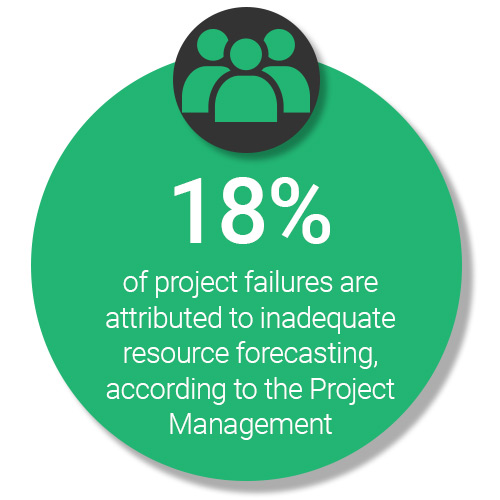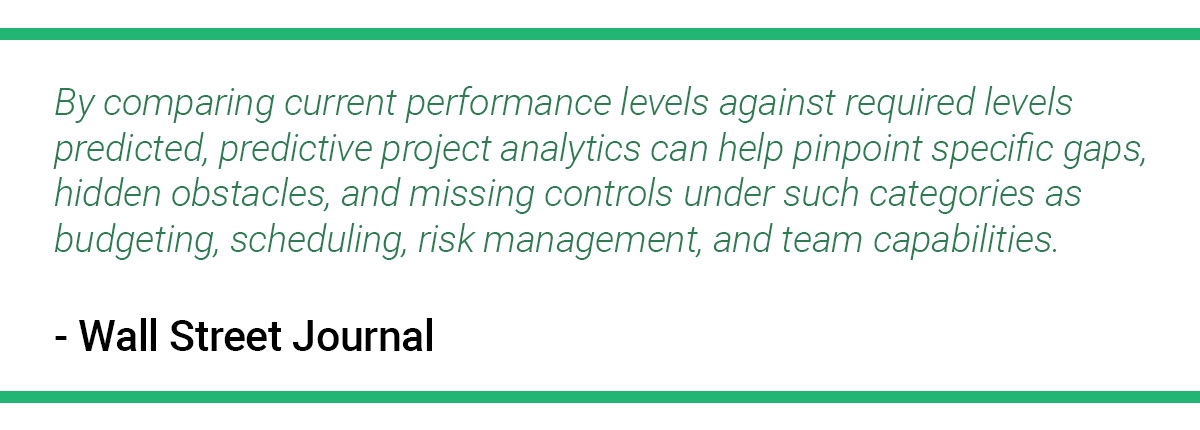
Taking charge of a project is an exciting responsibility! Before diving into the actual work, it's crucial to establish a comprehensive project plan. While it’s tempting to jump into a project without a clear plan, a lack of planning in project management leaves your team directionless and leads them down conflicting paths. Therefore, project planning is vital for setting a solid foundation for a successful project.
However, project planning is far from a linear process. As a project leader, you must adapt plans as you go along to align with the project realities. For example, adjusting the project timeline might be necessary after initial resource planning to prevent employee burnout. As a result, planning in project management can become intricate. Proceeding without a project plan puts you at risk of depleting available resources and failing to meet client objectives. It is here that innovative technological solutions like artificial intelligence (AI) play a critical role. AI-powered project management solutions revolutionize project planning by leveraging advanced algorithms and data analysis. They automate repetitive tasks like scheduling and resource allocation, freeing you to focus on strategic planning. Also, by analyzing historical data and project requirements, these solutions recommend realistic timelines and budgets, facilitating informed decision-making.
This article aims to provide a structured approach to planning in project management, the benefits, the purpose, and how advanced analytical solutions can assist you in creating more resilient and successful project plans.
What Is Planning in Project Management?
The second stage in the project management process, following project initiation and preceding project execution, is planning. At this crucial phase, a series of formal documents are crafted to outline the execution and control stages of the project. The core of planning in project management is the creation of a comprehensive project plan by the project manager, delineating the project's requirements.
During project planning, key components include establishing project goals, allocating project resources, and developing the project schedule. The plan also considers risk management and communication strategies while addressing scope, cost, and schedule baselines.

Why Is Planning in Project Management Critical?
Effective planning serves as a crucial step in organizing the entire project into a series of well-defined steps, ensuring timely access to all required resources. Within the project planning process, discussions center around key constraints like time, scope, and costs. In this phase, you must develop mitigation plans after the identification of potential risks. Additionally, continuously monitor the team's performance against the project plan to make room for adjustments and improvements as needed.
Through meticulous planning, you can transform abstract ideas into tangible realities. The primary purposes of planning encompass:
- Facilitating Communication and Providing Centralized Information: Planning in project management acts as a communication facilitator and serves as a central repository of information for project personnel.
- Informing Project Stakeholders: It assists the project sponsor and other key stakeholders in understanding project requirements.
- Task Assignment and Coordination: Planning in project management identifies individuals responsible for specific tasks, along with the when and how of task execution.
- Monitoring and Control: Planning allows for effective monitoring and control throughout the project lifecycle.
- Risk Management: The planning phase helps manage the project risks by identifying and addressing potential challenges.
- Generating Feedback for Future Planning: Valuable feedback generated during planning proves beneficial for refining strategies in subsequent project planning phases.
It is here that advanced analytics for managing projects play a critical role. Predictive intelligence solutions for managing projects offer invaluable insights to enhance planning capabilities, aiding in project selection and prioritization. By leveraging data-driven predictions, organizations can streamline decision-making processes, mitigate risks, and optimize resource allocation, ensuring successful project outcomes and long-term success.
If you find the idea of setting goals and objectives a bit daunting, don't be intimidated. We will share the top steps for you to plan your projects successfully.
The Top 10 Steps for Effective Planning in Project Management
 Know Your Goals and Objectives
Know Your Goals and Objectives
Establishing clear goals and objectives is a fundamental aspect of creating a project plan. The reason behind planning in project management is typically to guide yourself, your team, or your company toward a specific endpoint. Without a way to measure success, it becomes challenging to determine if the project has achieved its intended purpose. Defining goals not only serves as the foundation for the project plan but also ensures that everyone involved is aligned and focused on the desired results.
Determine the Project Scope
A well-defined project scope protects your project from unrealistic expectations and mid-course changes. By clearly outlining your project goals and deliverables, you can avoid scope creep, a common issue where additional tasks or significant changes derail progress.
Here's how to determine your project scope while planning for project management:
- Identify goals and objectives: What do you need to achieve?
- Define deliverables: What are the tangible outputs of the project?
- Set boundaries: What's excluded from the project (e.g., landscaping for a new building)?
A documented scope statement allows you to refer back to agreed-upon boundaries throughout the project.
Identify Your Stakeholders
Recognizing all stakeholders is a crucial step in project management, considering that various individuals or groups are involved at different levels of project engagement. Stakeholders in a project typically encompass:
- Customers: The primary entity for whom the project is undertaken, representing the recipient of the final product or service.
- End-users: Individuals or groups who will utilize the product once it is completed.
- Company and Its Leaders: The organization initiating the project and its key decision-makers.
- Project Team: The group directly engaged in the project's execution and completion.
Additionally, depending on the project's scope and impact, stakeholders may extend to include external organizations. Advanced analytical solutions analyze past projects and predict which individuals or groups might be impacted by the project and their potential concerns. This empowers early engagement and customizes communication to their specific needs.
Determine Roles and Responsibilities
The next step is to determine the essential project management skills and competencies needed for the project. Once you have compiled this list, you can proceed to define specific roles and assign responsibilities to individual stakeholders.
Common roles encompass the project sponsor, project manager, and project team members. The specific roles within the project team will vary based on the project's nature, but it's essential to incorporate roles like vendor relations and customer relations to ensure comprehensive coverage. Integration of AI-driven solutions for planning in project management facilitates better and continuous communication between project stakeholders. These technologies can streamline information dissemination, task allocation, progress tracking, and issue resolution, thereby enhancing collaboration and efficiency within the project team.
 Conduct a Kick-Off Meeting
Conduct a Kick-Off Meeting
This meeting brings all stakeholders together, helps articulate a shared vision for the project, and establishes positive working relationships. Given that the specific details of the project are yet to be finalized, the meeting agenda should encompass discussions on project scope, budget, timeline, and goals. Announce the key aspects, such as roles and responsibilities, and outline a communication plan. Your kick-off meeting must set the tone for the collaborative dynamics among stakeholders throughout the project's duration.
Set Your Project Timeline and Budget
Executing a project typically involves timeline and financial considerations. Therefore, establishing a time and budget is a critical aspect of the planning in project management. Setting the project timeline budget during the planning phase allows you to obtain necessary approvals, facilitates progress tracking, and enables informed and cost-effective decision-making during the project's implementation. Knowing the deadline and budget in advance is instrumental for effective resource management, ensuring adherence to the initial financial scope of the project. AI-powered predictive capabilities facilitate proactive planning, predict if your projects will be a success or a failure, and minimize the likelihood of unexpected financial surprises later in the project lifecycle.
Set Milestones
An integral aspect of planning in project management involves establishing milestones, which are specific objectives symbolizing significant achievements. Unlike tasks with defined start and end dates, milestones serve as markers for noteworthy accomplishments throughout the project. For example, in the context of developing a new product, setting a milestone on the project timeline for the finalization of the prototype provides a clear indicator of the progress made at that juncture. Implementation of AI-powered solutions predicts the likelihood of achieving specific milestones. This allows for realistic timeline creation and proactive adjustments to mitigate potential delays.
Conduct a Risk Assessment
Recognize and address potential risks during the project planning phase to prevent unexpected challenges later in the project execution phase. Facilitate a meeting or seek input from all team members to gather insights into the risks that should be considered.
Key areas of risk encompass:
- Project scope
- Resources (including personnel, financial, and physical resources)
- Project delays
- Failures in technology or communication
 While it's impossible to anticipate and control all potential risks, thoughtful consideration and planning in project management can serve as a preventive measure, safeguarding the project from failure. Utilizing predictive intelligence solutions for project planning helps you proactively address risks during the planning phase and establish a more resilient and adaptable project framework.
While it's impossible to anticipate and control all potential risks, thoughtful consideration and planning in project management can serve as a preventive measure, safeguarding the project from failure. Utilizing predictive intelligence solutions for project planning helps you proactively address risks during the planning phase and establish a more resilient and adaptable project framework.
Plan Your Project Communication
In his book Project Management for Humans, Brett Harned explains, "No matter what role you’re playing on a project, if you’re not making a strong effort to communicate with your team, you will likely fail."
Ensure your communication plan includes the following key details:
- Communication Channels: Specify the channels to be used for communication. For example, client communication might be through email, while team members may primarily use platforms like Slack.
- Frequency: Define the frequency of communication, whether it's on a weekly basis, on-demand asynchronously, or tied to specific project milestones.
- Communication Type/Details: Tailor the level of detail in communication based on the recipient's role. Executives may require high-level information, while team members actively engaged in the project may need more granular details.
- Contact Persons: Clearly identify individuals to whom communication should be directed, ensuring a streamlined flow of information and minimizing delays.
To achieve these, adopt smart technology solutions that drive a continuous feedback and communication loop within the project team.
Establish Quality Control and Assurance Plans
Developing plans for quality control and assurance is essential for establishing guidelines to manage, assure, and uphold standards within a project.
To establish quality control metrics, consider the following steps:
- Leverage In-House Expertise: Tap into the knowledge of in-house experts to incorporate best practices into your quality control measures.
- Reference Industry Standards: Utilize industry standards as benchmarks. For instance, e-commerce sites should adhere to secure and fast payment system standards.
- Collaborate with Key Stakeholders: Work closely with key stakeholders to determine expectations and requirements for project quality.
Incorporate acceptance criteria into your plan, clearly define individuals responsible for verifying work, and establish protocols for corrective actions. A robust quality control and assurance plan ensures that standards are maintained and contributes to the successful and reliable delivery of project outcomes. Additionally, integrating predictive insights into your project planning enables you to spot planning issues, identify unmet key performance indicators (KPIs) in previous projects, and quickly address systemic problems.
In this dynamic landscape of project management and due to the inherent complexity of large projects, the need for modern technology is more critical than ever before for project planning. Let’s understand how predictive analytics help the process of planning in project management.
Predictive Intelligence for Planning in Project Management
Artificial intelligence-enabled solutions such as predictive analytics prove instrumental in safeguarding return on investment (ROI) and preventing expensive overruns in intricate projects by addressing delivery risks and enhancing overall project performance. How, you ask?
- The application of predictive analytics contributes to more accurate and efficient planning in project management. Leveraging historical project data enables a more realistic estimation of task durations, thereby enhancing overall project timelines and ensuring timely project completion.
- Predictive analytics also serves to forecast resource availability and demand, optimizing the allocation of resources. This, in turn, results in reduced project costs and enhanced project efficiency.
 Consequently, projects characterized by complexity and high-risk factors can be executed in a timely and efficient manner. Furthermore, you can minimize the challenges related to regulatory compliance and cost-effectiveness through continuous cost management and improved control. By identifying potential project risks and addressing control gaps early in the process, you can streamline the project lifecycle, achieve quality objectives, and meet overall business goals.
Consequently, projects characterized by complexity and high-risk factors can be executed in a timely and efficient manner. Furthermore, you can minimize the challenges related to regulatory compliance and cost-effectiveness through continuous cost management and improved control. By identifying potential project risks and addressing control gaps early in the process, you can streamline the project lifecycle, achieve quality objectives, and meet overall business goals.
What’s Next?
Effective planning in project management serves as a strong foundation for successful project execution, providing a roadmap that guides teams toward achieving their goals. The dynamic nature of project planning demands adaptability and continuous assessment to align with the realities of project execution. By embracing a structured approach that encompasses goal setting, stakeholder identification, role definition, and comprehensive risk management, you can foster clear communication, efficient task coordination, and proactive issue resolution.
Additionally, the incorporation of modern technology, such as predictive analytics, adds a layer of intelligence to the planning process, enhancing accuracy in task estimation, optimizing resource allocation, and ultimately safeguarding project success. If you are looking for one such answer that predicts project problems before they become the reason for project failure, then TrueProject is your solution. TrueProject, the predictive intelligence for project health and performance, empowers you to thoroughly examine the complexities of your project. Furthermore, it enables you to identify and focus on specific project elements that demand attention during the project planning phase. With this profound level of insight from TrueProject, you can enhance your project planning procedures, minimize risks, and drive your projects towards successful outcomes.
As projects become more intricate and challenging, the fusion of strategic planning and advanced technological solutions becomes not only a necessity but a catalyst for achieving excellence in project management. With a solid foundation laid during the planning phase, project teams are better equipped to navigate complexities, mitigate risks, and deliver outcomes that not only meet but exceed client expectations.
More information on TrueProject at www.trueprojectinsight.com.
 About the Author:
About the Author:
Nivedita Gopalakrishna is a content marketing specialist within the TrueProject Marketing team with extensive experience in blog writing and website content creation across diverse industries. Nivedita’s proficiency in crafting engaging blog posts and informative website content is a testament to her years of experience. Beyond her prowess in written communication, Nivedita has the knack for creating visually appealing static graphics that have played a pivotal role in expanding TrueProject's marketing efforts. Through thoughtful design choices, she has helped convey the essence of the brand and captivate audiences effectively. Outside the professional sphere, Nivedita is a trained classical singer and a fitness enthusiast, embodying creativity and wellness in and out of the office.
Endnotes:
- Martins, Julia. “What is project planning? (Plus, 7 steps to write a successful project plan).” Asana, July 18, 2023. https://asana.com/resources/project-management-plan
- “Project Planning: How to Make a Project Plan.” ProjectManager, (n.d.). https://www.projectmanager.com/guides/project-planning
- Inabo, Stella. “The 9 Stages of a Successful Project Planning Process.” Float, October 25, 2022. https://www.float.com/resources/project-planning-process/
- Lutkevich, Ben. “Project planning: What is it and 5 steps to create a plan.” TechTarget, (n.d.). https://www.techtarget.com/searchcio/definition/project-planning
- “How to Create a Project Management Plan Online – 9 Simple Steps.” Kissflow, November 16, 2023. https://kissflow.com/project/steps-to-create-successful-project-plan/
- Watt, Adrienne; Barron, Merrie; and Barron, Andrew. “Overview of Project Planning.” BCcampus, (n.d.). https://opentextbc.ca/projectmanagement/chapter/chapter-8-overview-of-project-planning-project-management/
- Quiambao, Laura. “5 Reasons Why Project Work Plans Fail and How to Avoid Them.” Wrike, January 17, 2021. https://www.wrike.com/blog/5-reasons-why-project-work-plans-fail-and-how-to-avoid-them/#:~:text=That's%20not%20a%20very%20promising,nothing%20to%20tie%20them%20together.
- “A Five-Stage Approach to Predictive Project Analytics.” CIO Journal. The Wall Street Journal, (n.d.). https://deloitte.wsj.com/cio/a-five-stage-approach-to-predictive-project-analytics-01665017966




